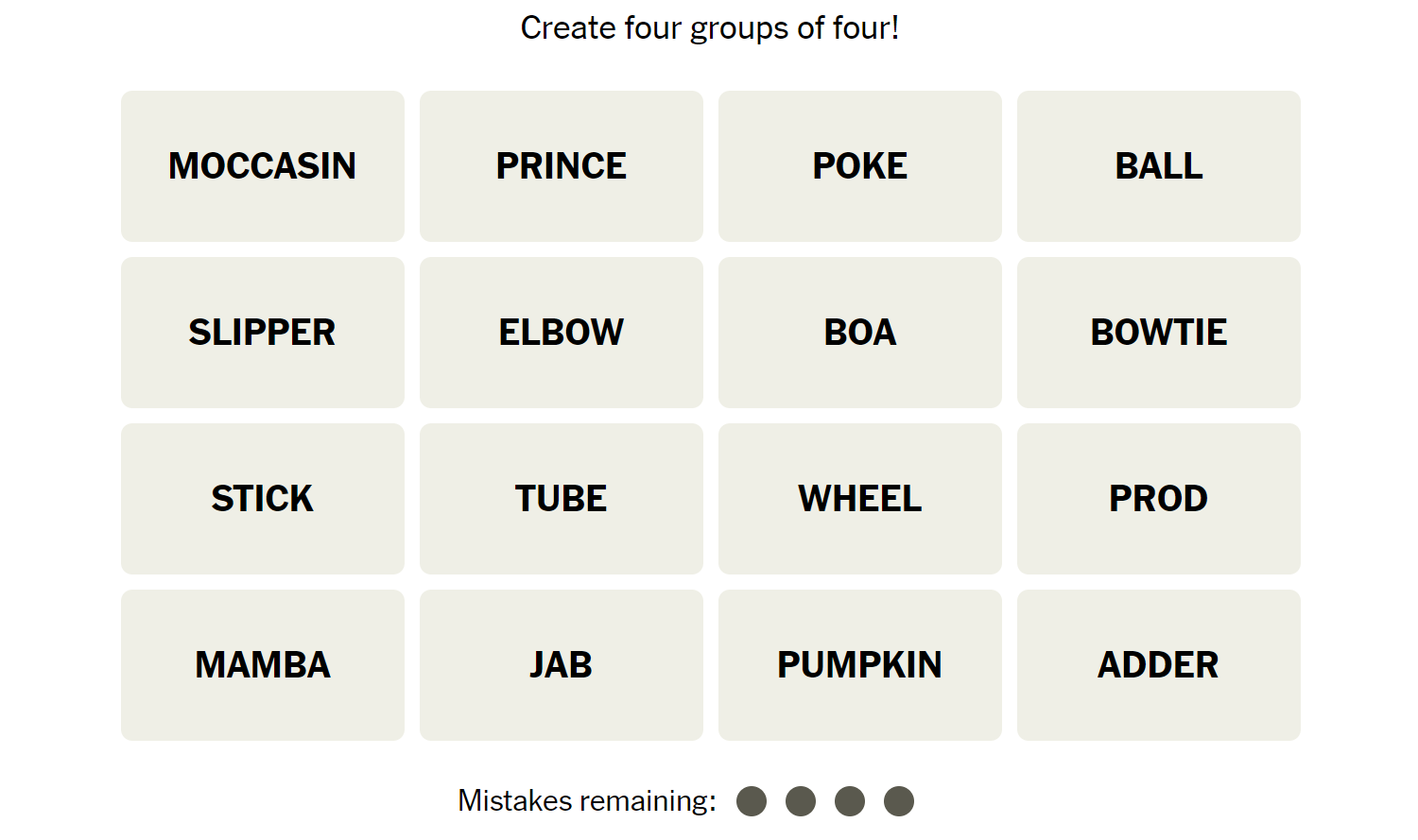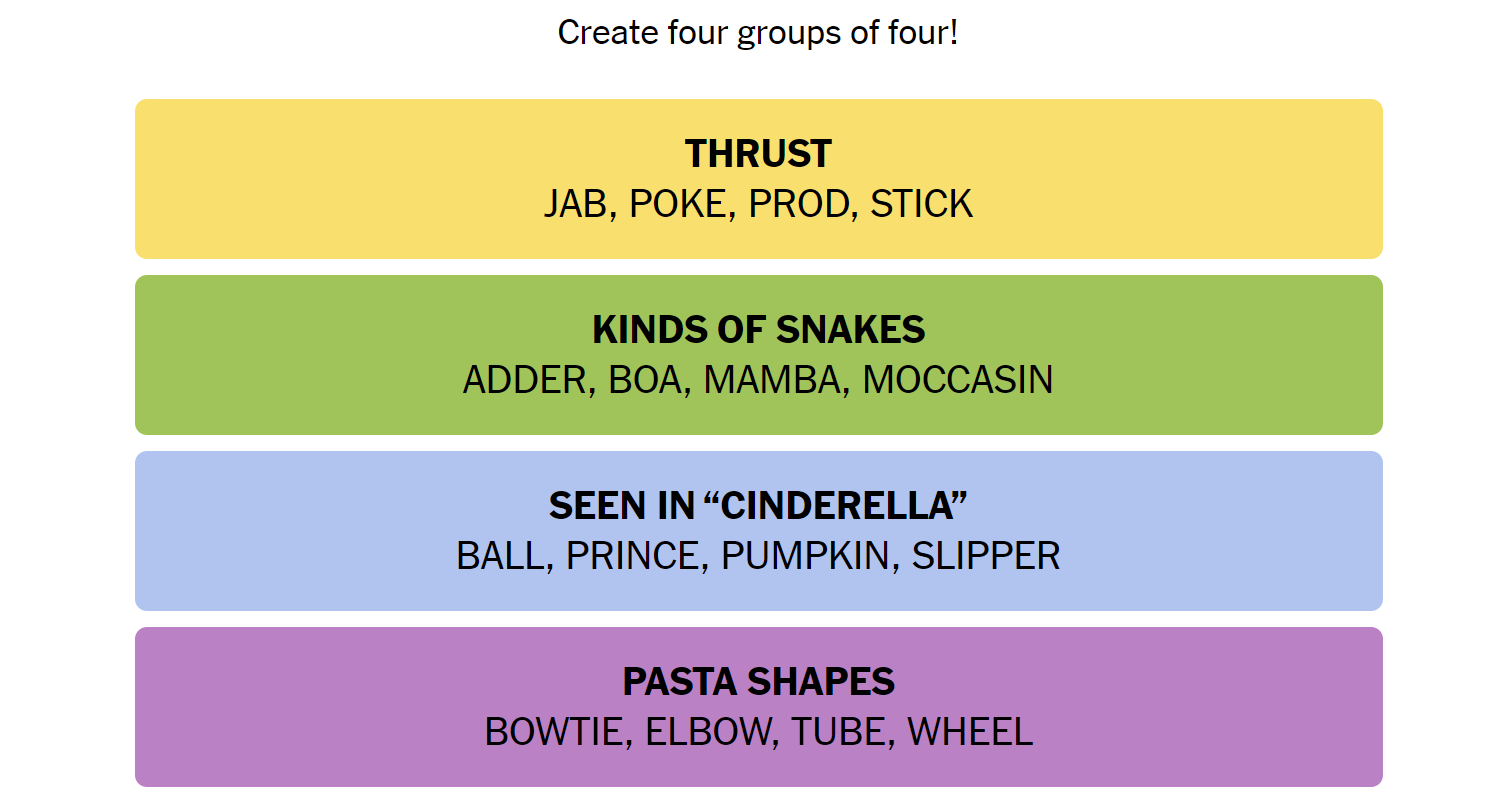Connections is a game from the New York Times that challenges you to find the association between words. It sounds easy, but it isn’t—Connections categories can be almost anything, and they’re usually quite specific. If you need a hand getting the answers, we’ve got you covered.
What Is Connections?
Connections is a puzzle game from the New York Times. The objective is simple: sort 16 words into groups of 4. Each group of words will be connected by some common idea or theme. That common element could be anything from the number of letters in the words to a common use for all the words. Once you’re confident, select 4 words, then hit “Submit.” You have only four attempts in total, so don’t be too guess-happy.
Hints for Today’s Connections Categories
Connections switched things up for the April 2nd puzzle. Instead of words, they’re emojis. Here are a few small hints to get you started on the 296th Connections game.
- Yellow: Not a pull
- Green: Hssss
- Blue: Once Upon a Time
- Purple: Carbohydrates
What Are Today’s Connections Categories?
If you still need help, the actual categories are:
- Yellow: Thrust
- Green: Kinds of Snakes
- Blue: Seen in “Cinderella”
- Purple: Pasta Shapes
Today’s Connections Answers
Yellow:
Jab, Poke, Prod, Stick
Green:
Adder, Boa, Mamba, Moccasin
Blue:
Ball, Prince, Pumpkin, Slipper
Purple:
Bowtie, Elbow, Tube, Wheel
How Did We Solve This Puzzle?
April 2nd’s game was pretty straight forward.
Boa immediately got us looking for snakes, and then adder, mamba, and moccasin filled out the Green category, which was “Kinds of Snakes.”
Once we finished Green, jab, poke, and prod seemed like a solid group to try. They’re all related to a sort of stabbing motion. Of the available words, only stick (as a verb) seemed to match, which worked. The Yellow category was “Thrust.”
The remaining 8 words were a little more difficult. At first, we saw wheel, ball, and tube, and thought there might be a group related to “Things that roll.” The only item on the list that might roll was a pumpkin, so we took a shot with that and failed.
After some further thought, it suddenly occurred to us that bowtie, elbow, tube, and wheel are all pasta shapes. Those 4 words made up the Purple category.
The four remaining words belong to the Blue category, which is “Seen in Cinderella.” Ball, Prince, Pumpkin, and Slipper were pretty straight forward references, though, and if we hadn’t been so interested in “Things that roll” we would probably have spotted them as a group first.
How Do You Guess Connections Categories?
There is no quick, reliable way to approach Connections like there is with Wordle, since Connections isn’t algorithmic. However, there are a few things to keep in mind that can help.
- Look for similar parts of speech. Are some words verbs and others nouns? Are some adjectives? Try mentally grouping them based on those categories and see if any other patterns jump out at you.
- Are the words synonyms? Sometimes categories will just be synonyms for a phrase, or very close to synonyms. Don’t rely too closely on this, though. Sometimes Connections will deliberately throw in words that are sometimes synonyms to mislead you.
- Try saying the words. Sometimes, saying the words helps. One puzzle we saw included the words go, rate, faster, clip, pace, speed, move, commute, and hurry—all of which are obviously related to the idea of motion. However, when you say them, it becomes a little more obvious that only four (go, move, hurry, faster) are things you’d actually say to prompt someone to get moving.
- Expect the red herring. Connections usually has words that could be plausibly, yet incorrectly, grouped together. Take the words Bud, Corona, and Light, as an example. You might instinctively see those three words together and assume they’re lumped together in a category related to beer—but they weren’t.
- Look for distinct words. If a word on your board doesn’t have multiple meanings or can really only be used in one context, try using that word as the basis for a category.
If you didn’t solve this one, don’t feel too bad—there’s always tomorrow! And those words may align with a topic you’re interested in, giving you a leg up on the competition.



